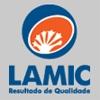Check out what is new in Animal Feed
Find the best technical articles, forums, and videos on Animal Feed at Engormix. Enter now and interact with the world's largest agricultural social network.
Starch is the most abundant source of energy in broiler diets, providing about 50 % of apparent metabolisable energy. Broiler diets generally contain approximately 40 % starch, which is thought to be completely digested within the small intestine. However, the microbiota in the large intestine also plays an important role in starch digestion, producing volatile fatty acids that act as an energy source. The potential consequence of this is an incorrect prediction of the digestible energy...
Comments : 0
Recommendations: 1
India is the largest producer of milk with 187.75 MT production ( Basic animal husbandry statistics, 2019). The average yield is about 1600 Kg/animal whereas the world average is about 2700 kg/animal. Israel and the USA are the leading countries with average yields of about 13000 and 10500 Kg/animal respectively. (UGAM FOUNDATION’S). The USA is the major producer of maize and contributes nearly 35 % of the total production of the world and maize is the driver of the US economy. The USA...
Comments : 4
Recommendations: 2
Credit picture: by BorgQueen
by University of Chemistry and Technology Prague
Mycotoxins are a group of low-molecular-weight compounds with a...
Comments : 1
Recommendations: 2
Introduction Mycotoxins are toxic secondary metabolites produced by some filamentous fungi that grow naturally in many commodities around the world [1,2]. In Brazil, contamination of substrates by mycotoxigenic fungi is rather common, since climatic conditions favor their development and the production of mycotoxins. These substances are chiefly produced by three fungal genera: Aspergillus, Penicillium and Fusarium [3]. Of these, the genus Fusarium is of great importance for it...
Comments : 0
Recommendations: 0
.jpg&w=3840&q=75)

Recommendations for better rendering process from Sifang Machinery
Suggested link
...
Comments : 0
Recommendations: 1
INTRODUCTION The Food and Agriculture Organization (FAO) forecasts that the human population will increase by 30% by 2050 (FAO, 2019) with corresponding increase in demand for food. Animal protein, the largest component of human food is entirely dependent on livestock production channels as its source. Over 70% of the cost of livestock production is feed, and the second largest component and cost of feed is the crude protein, a segment that has been challenged for its...
Comments : 0
Recommendations: 0
I. INTRODUCTION Knowledge on the digestibility of amino acids (AA) in raw materials is crucial for precise feed formulation, and for more efficient and sustainable use of feed resources. The accuracy of excreta-based digestibility measurements for determining N and AA digestibility may be questionable, due to the variable effects of the caecal microflora on dietary protein utilisation and the contribution of...
Comments : 0
Recommendations: 1
INTRODUCTION The importance of nutritional management for improving production and minimizing environmental impacts from beef and dairy cattle industry is well-established (McAllister et al., 1996; Havlík et al., 2014; Bach et al., 2020). Corn grain is the most commonly used cereal grain for dairy and beef production in the United States and its high starch content yields energy to support greater levels of milk and meat production (Giuberti et al., 2014)....
Comments : 0
Recommendations: 2
.jpg&w=3840&q=75)

Recommendations for better rendering process from Sifang Machinery
Suggested link
As renewable diesel emerges as the ideal biofuel, soybean oil demand is expected to erupt, and U.S. Soy is poised to meet demand.
The announcement of unlikely partnerships, such as Loves and Cargill, Marathon Petroleum and ADM and Chevon and Bunge, have appeared on front pages of newspapers across the United States.
“It’s clear that sustainability is a bigger and bigger business driver around the world,” says Jim Sutter, CEO of the U.S. Soybean Export...
Comments : 2
Recommendations: 0
Introduction Barley ranks fourth in global cereal production after corn, wheat and rice. About 65% of the world’s barley produced is fed to animals, including poultry. Australia is a significant global producer of barley, ranking in the top five countries with about 5% of global production and is among the top three barley exporters accounting for about 30% of malt and 20% of feed barley trade. Australia is a reliable supplier of two row...
Comments : 5
Recommendations: 1
The surge in corn prices has left pig producers looking for cost-effective alternatives. Tony Edwards explains that although barley contains less digestible energy than corn and wheat, because of its higher concentration of crude fiber, it is suitable for all types of pigs and provides more amino acids and more phosphorus than corn. World grain production is dominated by corn followed by wheat, rice, barley and sorghum. These grains are used for a...
Comments : 0
Recommendations: 0
Highlights • A total of 5.5% (8/144) of the examined chicken samples were contaminated with MRSA. • Most MRSA isolates (75%, 6/8) harboured the staphylococcal enterotoxin B (seb) gene. • Ø MRSA isolates initiated SEB production in experimentally contaminated chicken livers within 24 h of storage at > 8 °C. •SEB was maximally produced at 24 °C when the MRSA counts reached 7.3x10 3 ± 1.2x10 3 CFU/g...
Comments : 0
Recommendations: 0
.jpg&w=3840&q=75)

Recommendations for better rendering process from Sifang Machinery
Suggested link
I. INTRODUCTION Interactions among the branched-chain amino acids (BCAA) have long been observed in poultry (D’Mello and Lewis, 1970; Tuttle and Balloun, 1976; Mendonca and Jensen, 1989), but their effects on broiler performance have been contested with various researchers reporting no effects of BCAA interactions on broiler performance in practical diets (Burnham et al., 1992; Barbour and Latshaw, 1992; Waldroup et al., 2002)....
Comments : 0
Recommendations: 0
I. INTRODUCTION Antibiotic growth promoters have been successfully utilized in the past to control gut dysbiosis (Dibner and Richards, 2005). However, poultry production is changing because of consumer and governmental pressure to reduce the use of antibiotics (Cervantes, 2015). Little or no attention is given by nutritionists to understanding the fibre composition in poultry diets and their role in gut health...
Comments : 0
Recommendations: 0
INTRODUCTION Poultry production is one of the largest sources of animal protein supply for human consumption in the world. For many countries, like Australia, chicken-meat is the dominant animal protein, therefore production must continue to expand to supply increasing demand. In Australia, for instance, per capita consumption of chicken-meat is predicted to increase by 7.9% over the next 5 years [1]. Furthermore, feed represents 65% of total chicken-meat production cost [2],...
Comments : 1
Recommendations: 2
During these difficult times facing the coronavirus outbreak, the poultry producers are acting toward the abrupt drop of broiler meat prices. Further, the reduction of chicken sales has forced some farms to decrease their poultry production. Under this circumstance, poultry farmers are increasing their biosecurity and becoming more efficient by reducing the feed cost or costs related to poultry production. One of the main questions is, how many do we need to decrease the nutrients using feed...
Comments : 6
Recommendations: 1
.jpg&w=3840&q=75)

Recommendations for better rendering process from Sifang Machinery
Suggested link
Sometimes chicken flocks resulted in less livability and body weight at seven days of age than other ones without knowing the reason. Besides, this reduced performance at an early age has a carryover effect until the market age. What was the cause? Probably, the lower broiler performance is mostly related to the quality of the chicks that arrive at the farms. Indeed, the broiler breeders, incubation process, or in-ovo feeding impact on chick quality. The eggshell temperature, brooding...
Comments : 0
Recommendations: 0
.mp4&w=3840&q=75)
Tom Weber (AB Vista) mentions the relevance of balance in fiber, in this Swine It interview with host Laura Greiner....
Comments : 6
Recommendations: 4
INTRODUCTION Farm animals are raised to produce commodities such as meat, dairy products, and fiber. Energy, amino acids (AA), minerals, vitamins, and water are used by animals for body maintenance, growth, reproduction, and lactation. Body maintenance and the synthesis of body tissues (i.e., lean, fat, etc.) are dependent upon an adequate supply of dietary nutrients (1). The energy and nutrient losses associated with the conversion of dietary energy and nutrients into animal...
Comments : 0
Recommendations: 0
Feed represents the primary cost of broiler production, thus the formulation of cost-effective diets that meet broiler nutritional requirements is critical. To ensure this objective is met, nutrient specifications of feed ingredients must be accurately determined. However, Australian broiler nutritionists have expressed concern, as many nutrient specification databases contain dated information or lack Australian specific data. Therefore, the aim of this project was to compile current...
Comments : 0
Recommendations: 0



.jpg&w=3840&q=75)

















